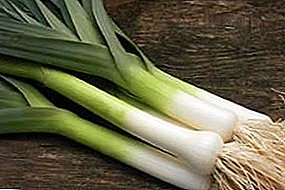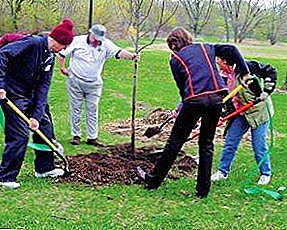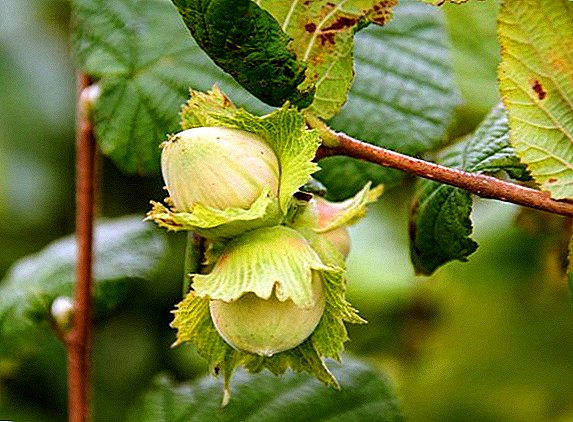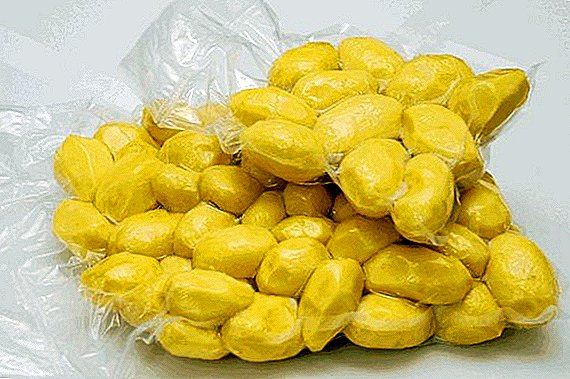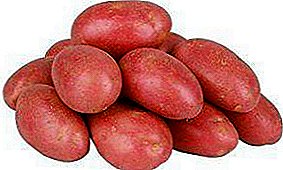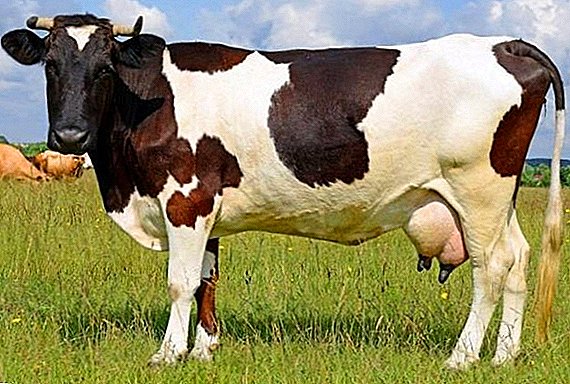 Walking through the field or forest edge, we usually look at the surrounding flora with interest. In the process of such contemplation, the usual logic is included: "this plant is useful, and that is a weed." The latter often include massive, but not too familiar species, among which, in fact, are truly healing. One of these herbs is jaundice, which deserves more detailed consideration.
Walking through the field or forest edge, we usually look at the surrounding flora with interest. In the process of such contemplation, the usual logic is included: "this plant is useful, and that is a weed." The latter often include massive, but not too familiar species, among which, in fact, are truly healing. One of these herbs is jaundice, which deserves more detailed consideration.
Plant description
The yellowcone is the name of a genus of herbaceous plants of the Cabbage family, growing almost everywhere. It includes 261 species of one- or two-year-old herbs with whole narrow leaves and small yellow (less often - red) flowers.
Representatives of 70 species can be found in our latitudes, but gray and left-wing species are most common.
A two-year gray (he is a sprawling) jaundice in the first season releases a basal sheet rosette. In the second year, several green-gray stems with small branches break through. During this period, the height reaches 30-90 cm. Oblong and rough to the touch leaves grow in a regular manner. 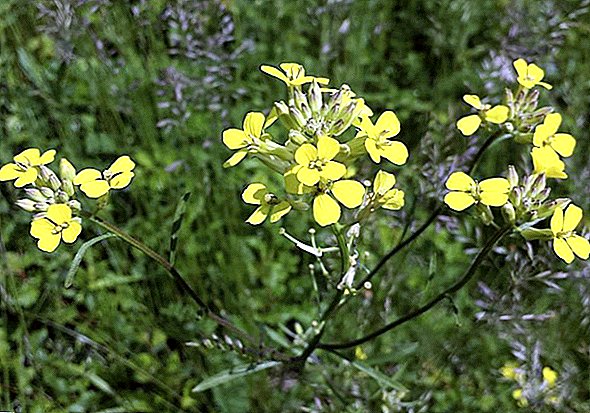
Important! Many types of jaundice are very similar to gray and levkoyny, so only an experienced herbalist can distinguish them. If there are no such skills, it is better to refrain from self-assembly.Flowering occurs in May-June, when small yellow-lemon flowers with four petals are visible on the racemes. After flowering, fruiting begins: tetrahedral pods appear (up to 7 cm each) with seeds. At the beginning of autumn the pod bursts and the seeds fly out.
Levkoyny view with an annual life cycle has a large size - the stems can grow up to 1.2 m in height. The leaves are oblong (3-6 cm) and narrow (4-5 mm), with pointed edges.
From May to September, bright yellow flowers with 4 lobes appear on oblique pedicels. The pattern of fruiting is the same, but the pods are larger (maximum 8.5 cm).  More common is left-handed jaundice - in temperate climates it grows on the edges, along dwellings and roads, near water bodies and in the fields. The gray line has approximately the same range.
More common is left-handed jaundice - in temperate climates it grows on the edges, along dwellings and roads, near water bodies and in the fields. The gray line has approximately the same range.
In agriculture, jaundice is considered a weed, but these two species are often used as medicinal plants. Working with them requires considerable caution: the grass is poisonous.
Weeds, which we have become accustomed to destroy in our gardens, often have healing properties. Find out what makes white white, field thistle, European dodder, field dawn, chicory, sow thistle, lobed pueraria useful for.
Stocking
For medicinal purposes, all terrestrial parts of the plant are used, but flowers are considered the most effective, stems are slightly less effective. For harvesting herbs are taken only left-handed and gray varieties.
Did you know? Zheltushka, core, heart grass - all these are popular names for the jaundice.
The best time to collect is May-July. (in regions with a more severe climate, it is quite realistic to conduct it in early July). It is important to catch the moment when the flowers barely began to bloom (during maximum flowering some of the beneficial properties are lost). That is, the most useful part of the yellowcone is collected only once a year.  The algorithm itself for collecting and processing looks like this:
The algorithm itself for collecting and processing looks like this:
- Work is carried out on a fine sunny day. After making sure that the dew is gone, put on gloves and take a knife or sharp scissors.
- The ground portion is cut 10-15 cm from the ground (the lower processes are left in place).
- The resulting collection immediately sorted out, removing the darkened or broken fragments.
- The plants are finely chopped and immediately placed in the attic (a slightly shaded place outside is suitable on a hot day). At the same time the grass keeps within in one layer, on previously spreading thick paper or a cardboard.
- For even drying, all stocks ted every day or two. It is necessary to maintain a fairly high temperature (40-45 ° C).
- After 7-10 days, the harvest will reach the desired condition. Willingness is determined very simply: if you take and squeeze the “chop” in the palm of your hand, it will easily crumble with a distinctly audible crunch.
Important! For therapeutic purposes, grass best collected away from busy trails or polluted water bodies is best suited. The optimal location is the edge of a remote forest or field that has not previously been “overfed” with pesticides.It then remains to place the material in closed paper bags or cardboard boxes. They should be stored in a dark, dry and ventilated place. In such circumstances, the collection will retain its valuable qualities throughout the year.

Composition
Green mass and jaundice seeds contain many useful compounds. The main ones are:
- cardiac glycosides - erikordin, erizimine and another two dozen substances similar to them (most of them are in flower and seeds (up to 6% of the total weight), whereas in the leaves it is four times less - 1.5%; 0.5-0.7%);
- flavonoids (scolimosin, rutide, etc.);
- tannins;
- glucose;
- bitterness;
- organic acids - citric, malic and ascorbic;
- essential oil present in the seeds (1%);
- they also have about 27-42% fatty oils, in the structure of which are indicated the necessary for the body linolenic and erucic, oleic and palmitic acids.
- calcium;
- potassium;
- manganese;
- gland;
- zinc;
- copper;
- chromium;
- Selena.

Did you know? The highest grass in the world is considered equal (a kind related to bananas). 10-15 m in height - the norm for these plants.As you can see, the grass, taken by many as a weed, is rich in the healthiest substances. Thanks to this, the jaundice shows enviable healing qualities.
Beneficial features
In folk medicine and the "official" pharmacology, the plant is valued for a whole range of medicinal properties, namely:
- Anti-inflammatory effect. The biologically active components of jaundice, penetrating into the cell layer, affect inflammation, neutralizing its focus.
- Antiseptic effect (strengthens the cell membrane, thereby protecting them from the action of viruses and bacteria).
- Acceleration of wound healing, including deep wounds, as well as background rotting processes. The skin regenerates faster (this is the merit of flavonoids), while the deep tissues of the dermis are being healed.
- Help in strengthening the bone apparatus and ligaments.
- Normalization of the heart (support of the myocardium, regulation of the ventricles, reduction of atrioventricular conductivity).
- Ability to eliminate symptoms of arrhythmia and tachycardia.
- Cleansing of blood vessels, which allows to prevent the occurrence of thrombosis and cardiovascular insufficiency ІІ-ІІІ degrees (both in acute and in chronic form).
- Soft but effective regulation of blood pressure. The same applies to blood sugar levels.
- Urinary and choleretic effect. Flavonoids and natural lipids, passing through the liver, relieve swelling.
- Soothing effect. When used, the nervous system unloads - the chronic fatigue syndrome goes away, the effects of stress are smoothed out. In addition, normal sleep returns.
- The yellowcone is also known as a strong expectorant used to treat respiratory tract diseases that take place against the background of copious mucus secretion.
- Those who suffer from shortness of breath or severe headaches will also appreciate the power of this plant.

Important! In the case of atherosclerosis, jaundice can be used strictly for prevention (and then only with the approval of the doctor)but not as a healing material.The list is impressive, and after getting acquainted with its points, many are interested in how to realize this potential by resorting to simple means on the basis of the yellowcone.
Application
The compositions most popular in traditional medicine are various tinctures and decoctions.
Let's start with vodka tincture. It helps in the treatment of asthma and rheumatism. But the main specialization is the removal of symptoms of heart and vascular diseases: angina pectoris, ischemia, thrombophlebitis and varicose veins. This also includes arrhythmia and hypertension.
In case of bronchial asthma, aloe, Canadian sanguinaria, purslane, euphorbia, Pallas, ivy-shaped budru, horseradish, rose, pine cones, astragalus are used.
Such extensive use is due to the action of numerous glycosides, working mainly with the heart and circulatory system. These substances slow down the heart rate somewhat, reduce pressure, increase the volume of coronary blood flow. Alcohol in this case only enhances the circulation of such useful elements.  The most universal recipe has the following form:
The most universal recipe has the following form:
- First, 6 tbsp. l 0.5 liters of vodka is poured into dry fine raw materials.
- Then the container under the lid insist for 2 weeks, not forgetting to shake from time to time.
- Reception is reduced to the use of 20-30 drops, diluted in 200 ml of pure water. Drink it three times a day, half an hour before meals.
Did you know? The yellowcone is a good honey plant, and the oil obtained from the seeds is suitable for the production of varnish.The entire course of treatment takes up to 3 months. If there is a need to continue it - a break of 1 month is required.
Strong action distinguishes and decoction of jaundice. As an internal remedy, it is used for hypertension, arrhythmias and other heart diseases that may require urgent relief of symptoms. With this development of events, these blanks normalize blood pressure, slow down heartbeats to acceptable indicators and maintain the tone of the heart muscle.
As an external composition, a decoction is used to work with problem areas of the skin, ulcers or wounds, and even in breast cancer.  Preparing an effective mixture as follows:
Preparing an effective mixture as follows:
- One teaspoon of crushed stem (or better leaves) pour 300 g of boiling water.
- After that, the liquid for 10 minutes kept in a water bath.
- The composition removed from the fire is filtered, and instead of the descended water, boiled water is added (up to the initial composition).
Contraindications and harm
Like any medicinal plant, the jaundice requires extreme care when using it. In addition, it is poisonous, so there is a need for prior medical consultation (self-treatment is excluded).
Despite its poisonousness, black eye, hogweed, common ivy, berry yew, dodder, flaxseed, common gledy, ledum marsh are effectively used for the treatment of diseases.

Important! When using any means on the basis of jaundice indirect contraindication considered age children up to 12 years old (and for the youngest it is poison at all).The doctor will definitely prohibit the use of this herb to pregnant women and nursing mothers. The ban on their use is associated with the presence of other contraindications:
- acute atherosclerosis;
- myocarditis in the acute stage;
- severe cardiosclerosis;
- endocarditis;
- organic changes in the heart with accelerated dynamics;
- individual intolerance.
There are some nuances. For example, if a person has not previously dealt with any parts of this herb, vomiting or nausea may occur. To avoid this, the reception should be started with small doses, and with the appearance of emetic urges - immediately stop, if necessary, having cleaned the stomach. Usually, it is enough to drink a large amount of water, if necessary - to put an enema.  More alarming "bells" (feeling of abrupt weakness all over the body, attacks of severe headaches or increased salivation) will also be an occasion to stop taking. In such a situation, emphasis is placed on enhanced nutrition and taking soft medicines.
More alarming "bells" (feeling of abrupt weakness all over the body, attacks of severe headaches or increased salivation) will also be an occasion to stop taking. In such a situation, emphasis is placed on enhanced nutrition and taking soft medicines.
Did you know? Humanity began to use plants for medicinal purposes 6 thousand years ago.Prolonged misuse is also fraught with an abnormal decrease in pressure (hypotension) or even arrhythmia. Here we need qualified medical assistance: home measures and traditional methods will, at best, fix their manifestations or worsen the condition of a person altogether.
In general, the use of jaundice can be reduced to two words - moderation and caution. We found out how to recognize the jaundice plant, what is its benefits and possible harm. We hope this information will be useful to our readers, and they will responsibly approach the use of this herb. Bogatyr all health!


